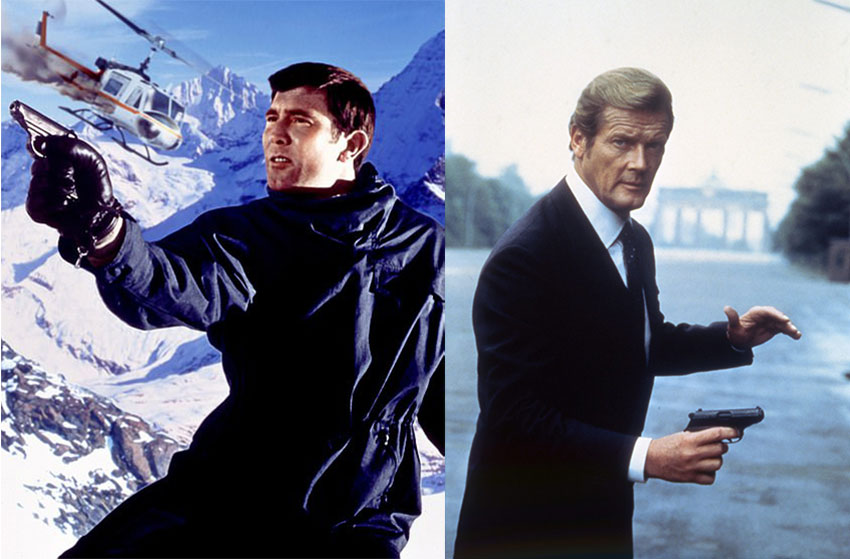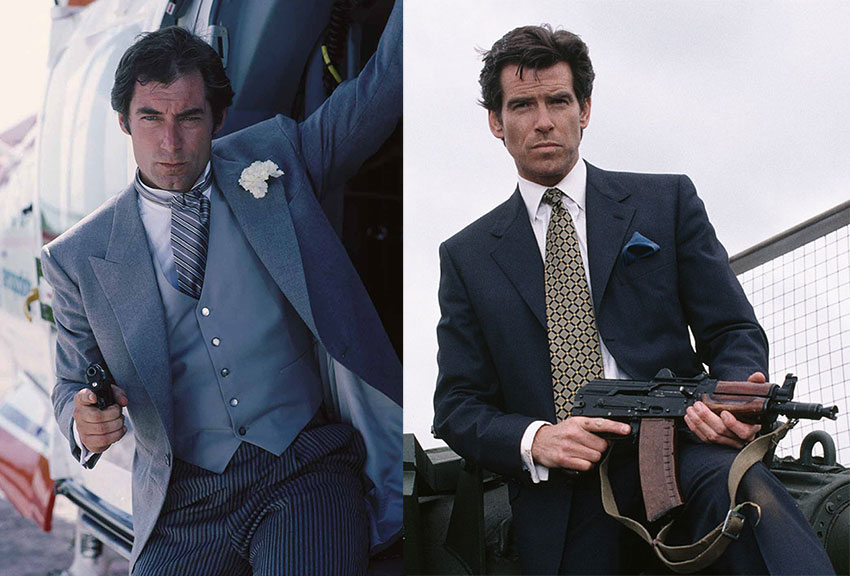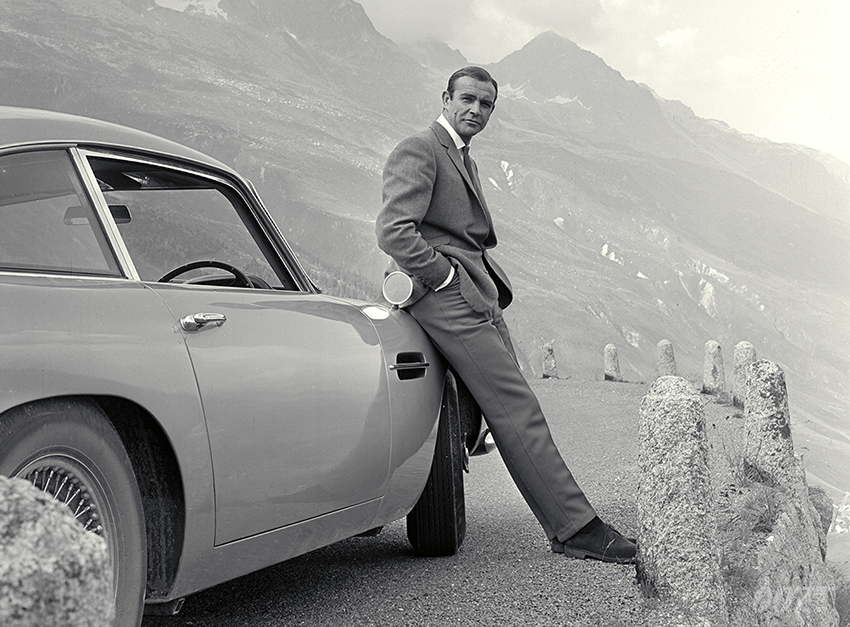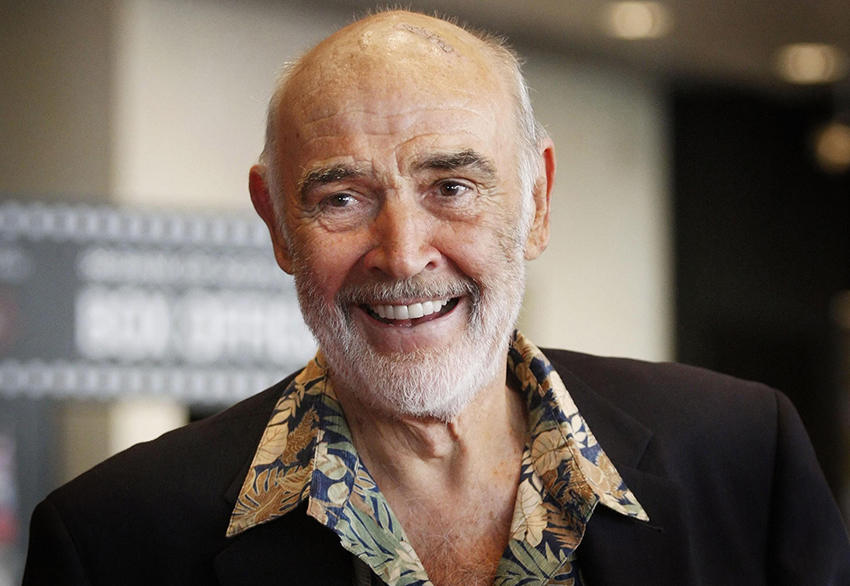
The world lost a movie legend this weekend past, as Sean Connery passed away at age 90. The Oscar-winning actor, who had not been much of a public figure since his retirement in 2006, had reportedly been unwell for a while now and passed away peacefully in his sleep at his home in the Bahamas. Connery leaves behind a gigantic body of work, strewn with iconic roles, but towering over all of those characters is James Bond.
The world’s longest-running movie franchise didn’t just begin with Connery, who first brought to life author Ian Fleming’s British superspy in 1962’s Dr. No, but it arguably wouldn’t even still be around had it not been for Connery’s depiction resonating as strongly as it did. There have been five other actors who have played Bond on-screen after Connery, but with his seven appearances (tied with Roger Moore for most Bond appearances on-screen), he has been routinely voted as the best to ever do it. Every single one of his successors has had to measure up to Connery, and in the opinion of many – myself included – nobody has been able to match him. And the funny thing is, he wasn’t even supposed to be Bond.
When producers Albert “Cubby” Broccoli and Harry Saltzman landed the film rights to Fleming’s work, they struggled to get production studio United Artists to truly commit to it. In an attempt to create hype for the adaptation, they decided to hold casting via a public contest. A model by the name of Peter Anthony won the role and was by every definition the spitting image of the classic Hollywood actor look that Fleming had envisioned when he first wrote the character (Bond’s upper-crust British playboy spy aspects coming from Fleming himself who had been a British Naval Intelligence officer with a reputation as a ladies man). The only problem was that Anthony was a terrible actor, prompting Broccoli to keep an eye out for a replacement.
As a Scottish, former Mr. Universe bodybuilding contender from a blue-collar background who had just recently turned to acting, Connery was not on anybody’s list. However, that changed when Broccoli saw a 29-year-old Connery in one of the young actor’s first roles, 1959’s Darby O’Gill and the Little People. Specifically, it was Connery’s physicality in the film’s climactic fistfight that intrigued him. Wanting a second opinion for a very key Bond aspect though, Broccoli took his wife to watch the film as well so as to determine if the Scottish actor had the right amount of sex appeal. Mrs. Broccoli gave a glowing appraisal and Connery was approached and eventually landed the gig. The struggle wasn’t over yet though.
Fleming had not been in favour of Connery’s casting at all, calling him “unrefined”. The author’s personal pick was Richard Todd, but scheduling conflicts prevented the Irish-born actor from taking the role. Cary Grant, who also fitted Fleming’s vision, was offered the role but turned it down as he felt he was too old, being in his fifties at the time. And so the role went to Connery, much to Fleming’s chagrin. And again, the struggle wasn’t over.
It is well-documented that Fleming absolutely hated Dr. No, the first Bond film that very loosely adapted Fleming’s eighth novel in the series. The author publicly described the film as “Dreadful. Simply Dreadful.” (and it could have been even worse with the first draft of the screenplay turning the titular villain Dr. No into a monkey!). But while Fleming hated the film, he surprisingly warmed to Connery after actually seeing the actor play his creation on-screen. He walked back his earlier misgivings so much so that when writing the novel You Only Live Twice, Fleming revealed Bond to have a Scottish father, giving the character the same heritage as Connery in honour of the actor.
What had won over Fleming – and soon the world – was how Connery infused the character with a combination of raw sex appeal and silky smooth charm, but also shocking viciousness and brute physicality, all while undercutting a scene with a quip. He could go from swooning, Martini-swilling heartthrob to cold-blooded bastard at the drop of a hat, offering a wry line as he killed without qualms. And it was with this balancing act of conflicting characteristics that Connery would establish the template from which every successor would draw their inspiration.
The short-lived George Lazenby (whose casting as Bond is worth another article in itself as he outright lied about his prior acting experience – he had none!) tried to mimic Connery’s approach overall in his single outing as Bond in 1969’s On Her Majesty’s Secret Service, but fell way short of the mark on each aspect. While the film itself is quite underrated, giving us a more emotional Bond story than we would see for another four decades, Lazenby just couldn’t nail it.

Roger Moore, who producers had wanted to replace Connery initially but who had been tied up with TV series The Saint, leaned hard into Connery’s womanizing aspects and cheesy one-liners when he started his seven-film run with 1973’s To Live and Let Die. Unfortunately, Moore often leaned too hard, turning his depiction campy. It also got straight-up embarrassing due to his advancing age. A 57-year old Moore called it quits after 1985’s A View To a Kill when he realized that the mother of one of his love-interests in the film was younger than he was!
For his two-film run of the character with The Living Daylights and License to Kill, Timothy Dalton tapped into that darkness Connery had brought to the role, even infusing his quips with some venom. With the AIDS pandemic just rearing its head at the time in the 1980s though, producers were wary of glorifying Bond’s sexual flagrancy and thus dialed back Dalton’s flirting and charming considerably.

When Pierce Brosnan ushered in the modern era of Bond with 1995’s Goldeneye, he would become, in my opinion, Connery’s best successor. He managed to pull off that same balancing act of all of Bond’s key characteristics – he was charming, quippy, physical, pragmatically cold. It’s just a pity that after the masterful Goldeneye, the films he starred in all got progressively worse, culminating in the 2002 turkey Die Another Die.
And when it came time for the character to be rebooted again with Daniel Craig in 2006’s Casino Royale, we saw a back-to-basics bruiser Bond. This bone-crunching brawler of a spy harkened back to the many physical fistfights Connery gave us, such as the all-time classic brawl with Robert Shaw’s Red Grant on the train in From Russia With Love or the claustrophobic elevator fight in Diamonds Are Forever. And just like Connery, Craig’s Bond was also relatively gadget-free for his first few films, having to rely on just his wits and skills to get out of a scrap.

With Craig’s run as Bond ending with the upcoming No Time To Die, producers have said they would want to give us something different than what we’ve had for the last 15 years. They just mean different to Craig though, because I can almost certainly promise that whoever gets the role will just be tapping into some aspect of Connery’s depiction of the character again. And why wouldn’t you?
Besides for how he portrayed Bond, it was also during Connery’s tenure (minus the unofficially released Never Say Never in 1983) where the franchise’s most recognizable traits were established. Dr. No gave us Bond girls and arguably the most iconic introduction in movie history with “Bond… James Bond”, From Russia With Love gave us the pre-credits sequence and SPECTRE, Goldfinger gave us the Aston Martin and gadgets, Thunderball gave us inventive and dangerous stunts and action sequences, You Only Live Twice gave us the legendary baddie Blofeld and the definitive villain base, Diamonds Are Forever gave us the crazy car stunts and flamboyant henchmen.

Every recognizable aspect of James Bond that you can think of either came from Connery himself or from the films in which he starred. His depiction on-screen even changed the character in the novels – no other James Bond actor can claim anywhere near that level of influence. And like James Bond, Connery was a flawed person whose personal life had its own fair share of controversy, but his contribution to one of the world’s most beloved characters of all time is simply unquantifiable. He wasn’t just the best Bond at the time, he was and always be who I see when I think of Bond.
Rest in peace, Sir Thomas Sean Connery (25 August 1930 – 31 October 2020).

Last Updated: November 2, 2020























Iskape
November 2, 2020 at 10:49
I can still watch all the Bond films to this day, and enjoy them. I have to admit, the only other film I enjoyed of Connery’s was The Rock. So much of what I remember of his acting is dominated by his role as Bond!
HvR
November 2, 2020 at 11:22
“a great day comrades, we sail into history. Soiuz nerushimyj respublik svobodnykh…”
Iskape
November 2, 2020 at 11:25
I never watched The Hunt for Red October (I admit, I had to Google the quote).
Kervyn Cloete
November 2, 2020 at 13:29
You need to fix that. It’s a brilliant thriller.
WhiteRock
November 3, 2020 at 08:44
Second that – probably one of the best Tom Clancy adaptations(not that I didn’t like the Harrison Ford ones).
BradeLunner
November 2, 2020 at 11:41
Ahhh what a huge part of father son movies with my dad, great memories thanks to Sean Connery